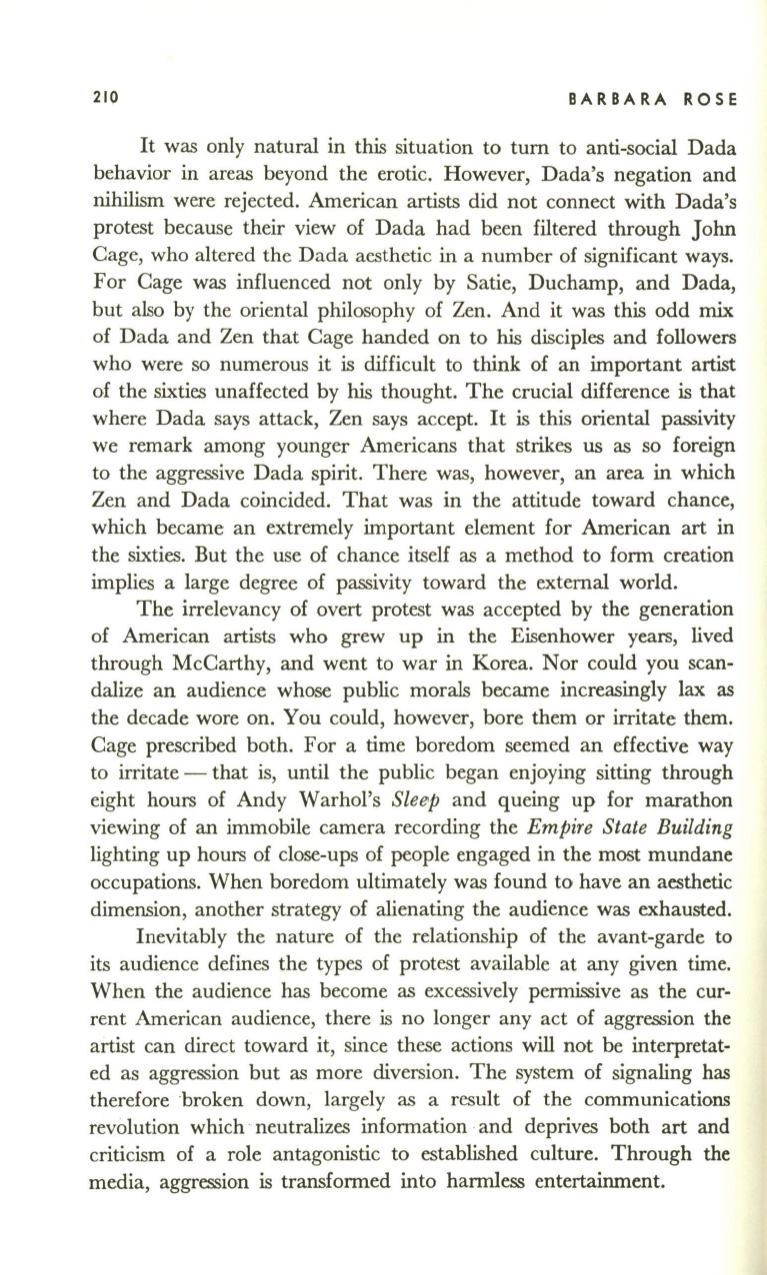
210
BARBARA ROSE
It
was only natural in this situation to tum to anti-social Dada
behavior in areas beyond the erotic. However, Dada's negation and
nihilism were rejected. American artists did not connect with Dada's
protest because their view of Dada had been filtered through John
Cage, who altered the Dada aesthetic in a number of significant ways.
For Cage was influenced not only by Satie, Duchamp, and Dada,
but also by the oriental philosophy of Zen. And it was this odd
mix
of Dada and Zen that Cage handed on to his disciples and followers
who were so numerous it is difficult to think of an important artist
of the sixties unaffected by his thought. The crucial difference is that
where Dada says attack, Zen says accept.
It
is this oriental passivity
we remark among younger Americans that strikes us as so foreign
to the aggressive Dada spirit. There was, however, an area in which
Zen and Dada coincided. That was in the attitude toward chance,
which became an extremely important element for American art in
the sixties. But the use of chance itself as a method to form creation
implies a large degree of passivity toward the external world.
The irrelevancy of overt protest was accepted by the generation
of American artists who grew up in the Eisenhower years, lived
through McCarthy, and went to war in Korea. Nor could you scan–
dalize an audience whose public morals became increasingly lax as
the decade wore on. You could, however, bore them or irritate them.
Cage prescribed both. For a time boredom seemed an effective way
to irritate - that is, until the public began enjoying sitting through
eight hours of Andy Warhol's
Sleep
and queing up for marathon
viewing of an immobile camera recording the
Empire State Building
lighting up hours of dose-ups of people engaged in the most mundane
occupations. When boredom ultimately was found to have an aesthetic
dimension, another strategy of alienating the audience was exhausted.
Inevitably the nature of the relationship of the avant-garde to
its audience defines the types of protest available at any given time.
When the audience has become as excessively permissive as the cur–
rent American audience, there is no longer any act of aggression the
artist can direct toward it, since these actions will not be interpretat–
ed as aggression but as more diversion. The system of signaling has
therefore -broken down, largely as a result of the communications
revolution which -neutralizes information and deprives both art and
criticism of a role antagonistic to established culture. Through the
media, aggression is transformed into harmless entertainment.


